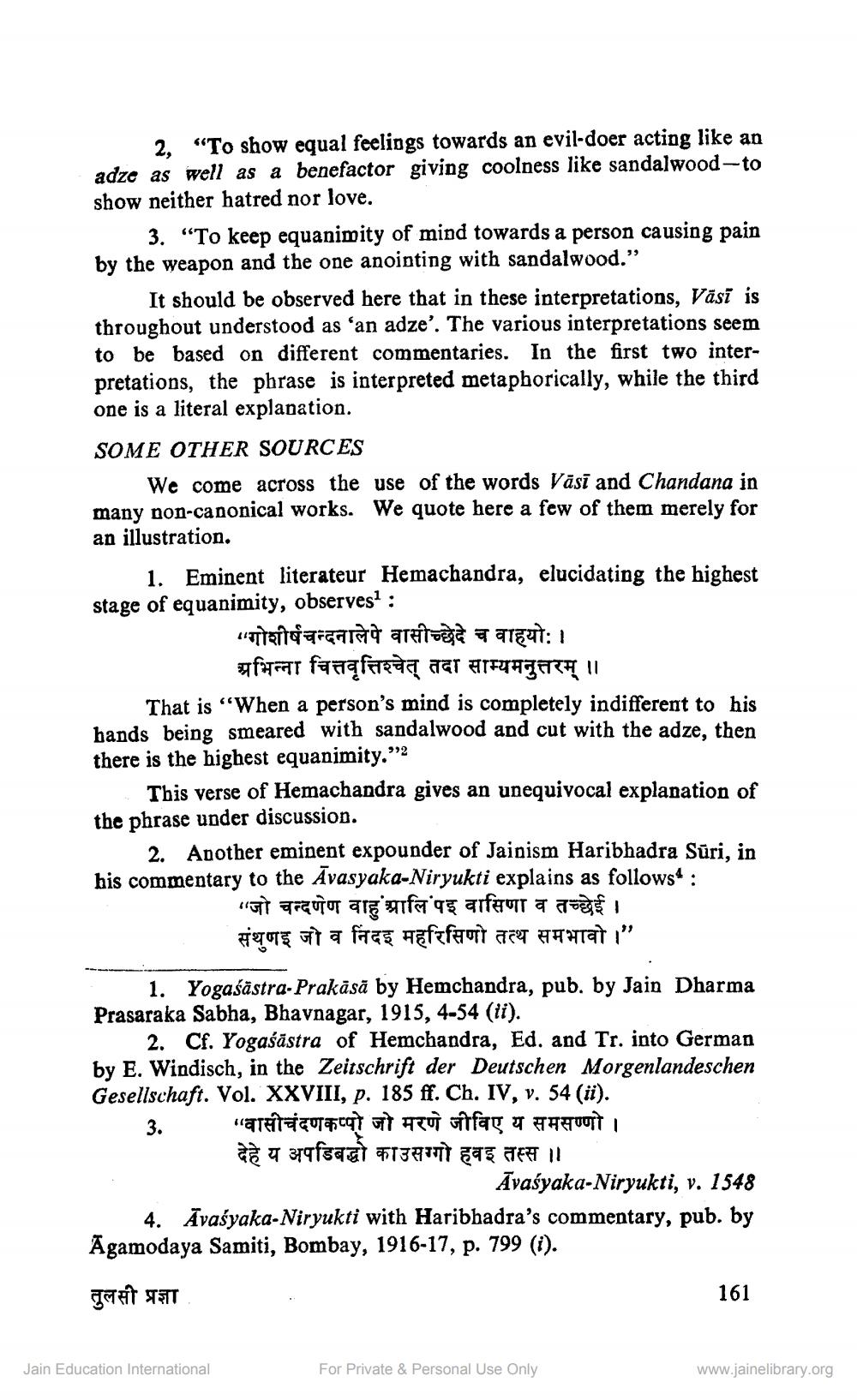________________
2, “To show equal feelings towards an evil-doer acting like an adze as well as a benefactor giving coolness like sandalwood - to show neither hatred nor love.
3. “To keep equanimity of mind towards a person causing pain by the weapon and the one anointing with sandalwood.”
It should be observed here that in these interpretations, Väst is throughout understood as 'an adze'. The various interpretations seem to be based on different commentaries. In the first two interpretations, the phrase is interpreted metaphorically, while the third one is a literal explanation. SOME OTHER SOURCES
We come across the use of the words Vāsī and Chandana in many non-canonical works. We quote here a few of them merely for an illustration.
1. Eminent literateur Hemachandra, elucidating the highest stage of equanimity, observes :
"गोशीर्षचन्दनालेपे वासीच्छेदे च वाहयोः।
अभिन्ना चित्तवृत्तिश्चेत् तदा साम्यमनुत्तरम् ।। That is “When a person's mind is completely indifferent to his hands being smeared with sandalwood and cut with the adze, then there is the highest equanimity.”?
This verse of Hemachandra gives an unequivocal explanation of the phrase under discussion.
2. Another eminent expounder of Jainism Haribhadra Sūri, in his commentary to the Āvasyaka-Niryukti explains as follows:
"जो चन्दणेण वाहुप्रालि पइ वासिणा व तच्छेई । संथणइ जो व निदइ महरिसिणो तत्थ समभावो।"
1. Yogaśästra-Prakāsā by Hemchandra, pub, by Jain Dharma Prasaraka Sabha, Bhavnagar, 1915, 4-54 (ii).
2. Cf. Yogaśāstra of Hemchandra, Ed. and Tr. into German by E. Windisch, in the Zeitschrift der Deutschen Morgenlandeschen Gesellschaft. Vol. XXVIII, p. 185 ff. Ch. IV, v. 54 (ii). 3. warátaicutaCT UT FEUT oftfag 7 TAHUTTI देहे य अपडिबद्धो काउसग्गो हवइ तस्स ॥
Āvaśyaka-Niryukti, v. 1548 4. Āvaśyaka-Niryukti with Haribhadra's commentary, pub. by Āgamodaya Samiti, Bombay, 1916-17, p. 799 (i). तुलसी प्रज्ञा
161
Jain Education International
For Private & Personal Use Only
www.jainelibrary.org




